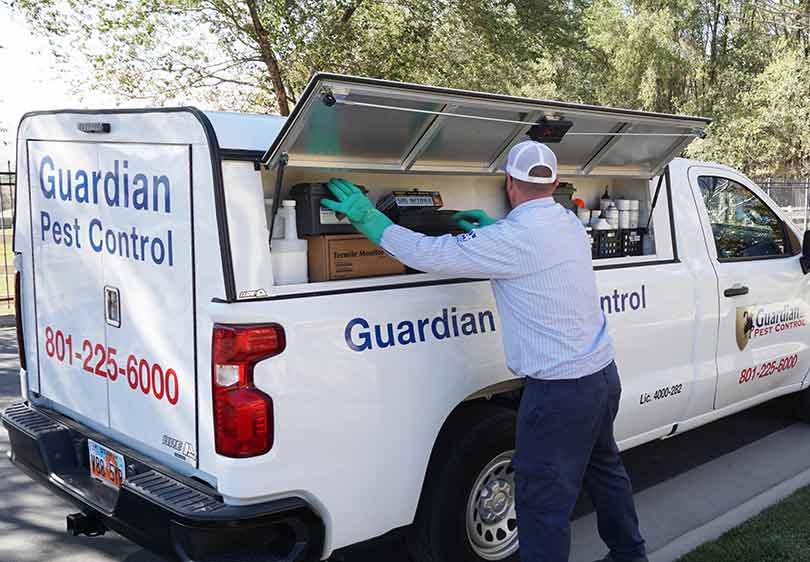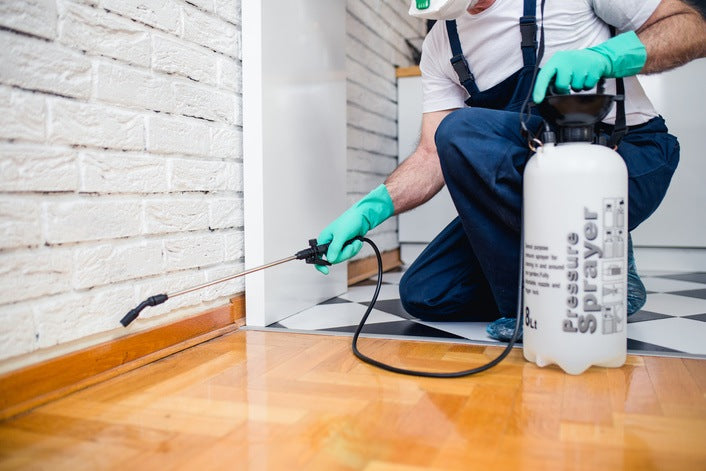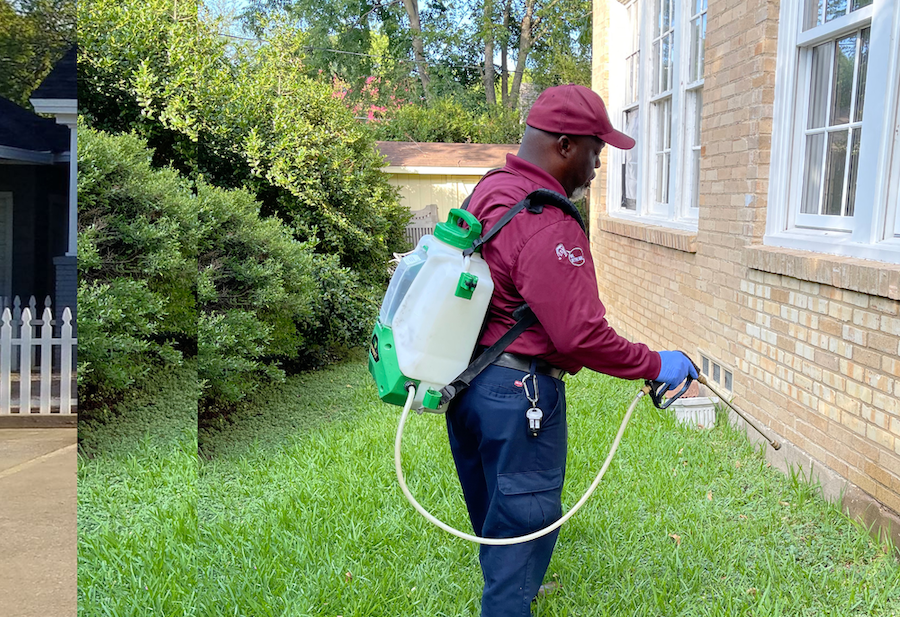Orem Pest Control: Your Companion in Preserving a Pest-Free Atmosphere
Wiki Article
Finding the Various Sorts Of Bug Control Techniques and Their Applications
Insect control is an important aspect of preserving a secure and healthy and balanced setting, whether it be in property, industrial, or agricultural settings. From chemical methods that target specific bugs to biological methods that harness natural predators, the realm of parasite control is diverse and large.Chemical Bug Control Strategies
Chemical bug control strategies are extensively used in agriculture and pest administration to properly remove or regulate pest infestations. These approaches entail the usage of chemical substances, such as herbicides, pesticides, and pesticides, to decrease or get rid of parasite populaces that pose a risk to crops, livestock, or human health. Pesticides, for instance, target details pests like pests, weeds, or rodents, disrupting their life cycles or triggering direct damage upon call. Herbicides are especially made to regulate unwanted vegetation that takes on crops for nutrients and sources. Pesticides, on the other hand, are utilized to battle insect pests that can damage plants and transfer conditions.While chemical pest control techniques can be extremely effective in managing insect populaces, they likewise elevate problems regarding possible ecological and wellness threats. Improper use or overuse of chemical pesticides can lead to contamination of air, water, and dirt, hurting non-target microorganisms and causing long-lasting eco-friendly damages. Furthermore, repeated direct exposure to chemical deposits may pose wellness risks to farmworkers, customers, and wildlife. It is crucial to follow safety standards, use incorporated pest management methods, and consider alternative approaches to lessen the adverse effects of chemical bug control strategies.
Biological Parasite Control Methods
 Biological insect control methods use living microorganisms to lower and manage insect populaces in a lasting and environmentally pleasant way. This method entails introducing all-natural killers, bloodsuckers, or microorganisms to regulate parasites without the need for synthetic chemicals. One usual technique is the release of ladybugs to fight aphids in gardens, as ladybugs are natural predators of these damaging bugs. Another example is making use of Bacillus thuringiensis (Bt), a germs that produces toxins deadly to specific insect larvae, to regulate caterpillars and mosquitoes.
Biological insect control methods use living microorganisms to lower and manage insect populaces in a lasting and environmentally pleasant way. This method entails introducing all-natural killers, bloodsuckers, or microorganisms to regulate parasites without the need for synthetic chemicals. One usual technique is the release of ladybugs to fight aphids in gardens, as ladybugs are natural predators of these damaging bugs. Another example is making use of Bacillus thuringiensis (Bt), a germs that produces toxins deadly to specific insect larvae, to regulate caterpillars and mosquitoes. 
Biological pest control techniques provide a number of advantages over chemical methods. Overall, biological insect control methods provide a reliable and all-natural choice to traditional chemical therapies, promoting a balanced environment and much healthier environments.
Physical Insect Control Approaches
Making use of physical techniques to control bugs includes the use of mechanical or non-chemical methods to mitigate and manage parasite infestations effectively. One typical physical insect control approach is the installation of fencings, webs, or screens to block parasites from going into certain areas.Another physical approach is making use of catches, such as snap traps for rodents or scent catches for bugs. These catches goal to record parasites without posing any type of threat to humans or the setting. Additionally, physical internet control methods can include methods like handpicking parasites off plants, utilizing vacuum devices to eliminate pests, or employing warmth therapies to eradicate bed bugs see it here and various other insects in plagued areas.
Integrated Pest Monitoring Approaches
Implementing an all natural technique to pest management, Integrated Pest Administration (IPM) techniques aim to integrate different efficient techniques to prevent and manage parasite problems while reducing environmental impact and making certain lasting bug control techniques. IPM entails the assimilation of multiple control methods such as organic control, cultural practices, mechanical control, and the careful use chemicals.

Furthermore, IPM emphasizes the importance of tracking and assessing pest populaces to establish one of the most ideal control approaches. By applying IPM methods, bug control efforts end up being more targeted and reliable, lowering the risks connected with excessive pesticide usage and promoting long-lasting insect monitoring remedies.
All-natural and Organic Insect Control Options

One preferred natural insect control method is neem oil, derived from the seeds of the neem tree, which works as a repellent and have a peek at this site interrupts the growth and growth of bugs. Diatomaceous earth, an all-natural silica-based powder, is another efficient natural bug control option that works by drying out bugs upon call. By incorporating all-natural and natural insect control alternatives right into insect administration techniques, individuals can successfully regulate parasites while lessening harm to the environment and advertising lasting methods.
Final Thought
In conclusion, numerous pest control strategies such as chemical, biological, physical, integrated insect administration, and natural alternatives are available for effectively taking care of insect invasions. Each method has its own benefits and applications depending upon the sort of parasite and the environment. By understanding the various kinds of insect control techniques and their applications, individuals can make informed choices on the most proper approach to control pests and secure their residential or commercial property.Chemical bug control methods are widely utilized in agriculture and pest monitoring to properly eliminate or control pest invasions - Orem Pest Control. Natural insect control approaches entail using organic control agents, such as bloodsuckers or killers, to handle parasite populations. By incorporating natural and all-natural pest control choices right into pest monitoring methods, people can effectively regulate parasites while lessening damage to the setting and promoting lasting methods
In final thought, various insect control methods such as chemical, organic, physical, incorporated parasite monitoring, and natural choices are offered for efficiently taking care of insect invasions. By understanding the different types of pest control methods and their applications, people can make informed choices on the most appropriate strategy to control insects and shield their home.
Report this wiki page